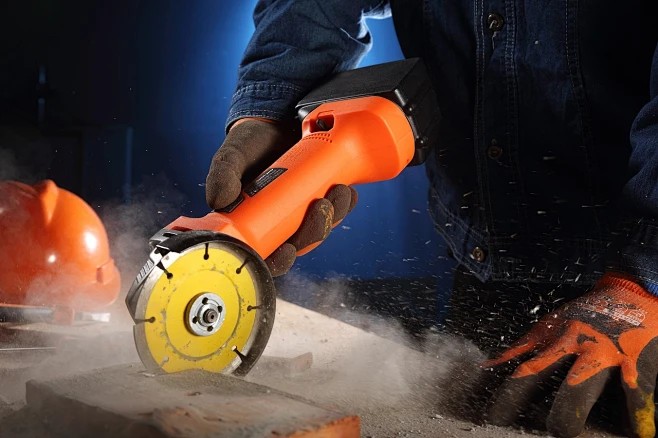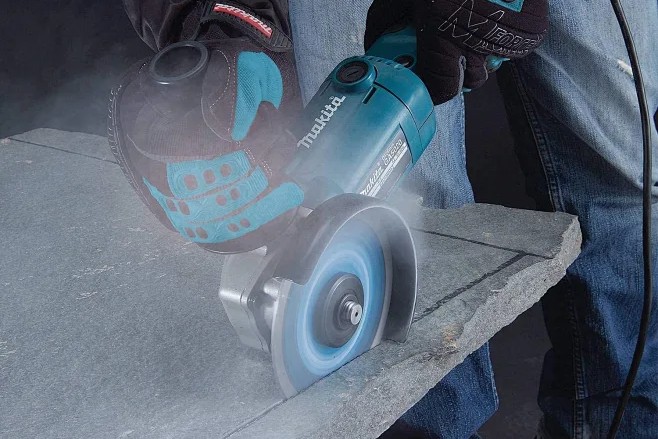
Correct method of cutting with an angle grinder
Introduction to Angle Grinders
An angle grinder is a power tool commonly used for cutting, grinding, edging, and a variety of other tasks. Its compact size, flexible operation, and wide range of applications make it an essential tool for workers in many different industries. However, it is important to realize that angle grinders can pose potential risks and cause injury if used incorrectly. Therefore, it is crucial to understand the correct usage before operating an angle grinder.
Preparation for Safe and Effective Use of Angle Grinders
Before using an angle grinder for cutting, grinding, or other tasks, preliminary preparation is necessary to ensure that the tool is properly assembled and ready for safe and efficient operation. The pre-preparation process includes assembling the relevant components and conducting a thorough inspection to ensure that the angle grinder is in optimal working order.
Assembling the angle grinder:
1. Plug in the power cord and turn on the power: Start by plugging in the angle grinder's power cord and making sure it is securely connected to a suitable power source. Once the power cord is properly plugged in, turn on the power to start the angle grinder.
2. Assemble the cutting disc and secure it: Select the appropriate cutting disc for the specific task at hand and assemble it onto the angle grinder. Make sure the cutting blade is securely in place, following the manufacturer's installation and tightening guidelines to prevent any potential loosening during operation.
3. Assemble the protective cover and tighten it with the set screws: The protective cover acts as a protective barrier and is an important safety feature of the angle grinder. Assemble the guard to the angle grinder and secure it securely using the provided set screws. Guards help contain debris and provide additional protection during operation.
Check and verify:
Once the relevant parts of the angle grinder are assembled, it is crucial to conduct a thorough inspection to verify that all components are assembled correctly and in good working order.
Check the power cord and switch: Check the power cord for any signs of damage or wear and make sure the switch is working properly. Any abnormalities should be dealt with promptly, and damaged parts should be repaired or replaced before use.
Verify cutting blade: Verify that the cutting blade is securely in place and properly aligned with the angle grinder. Make sure the cutting disc is suitable for the intended task and meets the workpiece material and operating requirements.
Make sure the guard is assembled correctly: Verify that the guard is securely fastened with set screws and provides adequate coverage and protection during operation.
By pre-preparing and assembling the relevant parts of the angle grinder, the user can ensure that the tool is ready for safe and efficient operation. When using an angle grinder to perform a variety of tasks, thorough inspection and verification of assembled components is critical to reducing potential risks and ensuring a safe working environment.

Choosing the Right Cutting Disc for Your Angle Grinder
Choosing the right cutting disc is crucial to ensuring cut quality and safety when using an angle grinder. The selection process involves considering factors such as material, grade, diameter, and thickness to match specific material and operating requirements. Additionally, it is important to inspect the cutting disc for any signs of damage or wear before use to prevent potential hazards and ensure optimal performance.
Material and grade selection: Cutting discs of different materials and grades are designed to suit different cutting tasks and workpiece materials. For example, a cutting disc for metal cutting may be different than a cutting disc for stone or concrete. It is important to choose a cutting disc designed specifically for the material being cut to ensure efficient, precise cutting results.
Diameter and thickness considerations: The diameter and thickness of the cutting disc should be selected based on the specific cutting requirements and workpiece size. Larger diameter and thicker cutting discs are suitable for heavy-duty cutting tasks, while smaller diameter and thinner cutting discs are suitable for precision cutting and complex jobs.
Inspect the Cutting Blade: Before using the cutting blade, it must be inspected for any signs of damage, wear, or deformation. Check for cracks, chips, or any irregularities that could compromise the integrity of the cutting blade. If any abnormalities are found, the cutting disc must be replaced to ensure safe and efficient cutting operations.
Match actual needs: When selecting cutting blades, consider specific cutting requirements and usage conditions. Factors such as material type, depth of cut, and required cutting speed should be considered to ensure that the cutting disc selected meets the actual needs of the task at hand.
By carefully selecting the appropriate cutting blade and inspecting it thoroughly before use, users can ensure a safe and efficient cutting operation with an angle grinder. Prioritizing the correct selection and maintenance of cutting discs is critical to achieving high-quality cutting results and preventing potential safety hazards associated with damaged or inappropriate cutting discs.

Solutions to Common Problems When Using an Angle Grinder
1. The cutting wheel is overheated:
If the cutting wheel becomes overheated during prolonged use, the cutting task must be paused and the wheel allowed to cool. Continued use of an overheated cutting wheel may compromise its effectiveness and safety. Before starting a new cutting task, make sure the cutting wheel has cooled to a safe operating temperature.
2. Uneven cutting:
If the surface being cut appears to be uneven, consider adjusting the cutting wheel or changing the cutting direction to achieve a more even cut. If the problem persists, it may be necessary to make deeper cuts or explore alternative working methods to effectively address the imbalance.
3. Different cutting materials:
Certain materials, especially metals, can present cutting challenges due to changes in hardness and composition. If you encounter difficulties, consider adjusting the cutting speed or increasing the cutting pressure to optimize the cutting process. If these adjustments don't solve the problem, you may need to replace the cutting wheel with one that's more suitable for the specific material you're cutting.
By addressing these common problems with practical solutions, users can enhance their understanding of how to effectively resolve problems that may arise during the use of an angle grinder. Prioritizing safety, efficiency and the proper use of tools is critical to achieving optimal results and preventing potential hazards associated with improper operation.
-
Online service
-
Official wechat
account
-
QQ:40933769
-
E-mail:
sales@z-lion.com
Online service
Please feel free to give your inquiry in the form below. We will reply you in 24 hours.

